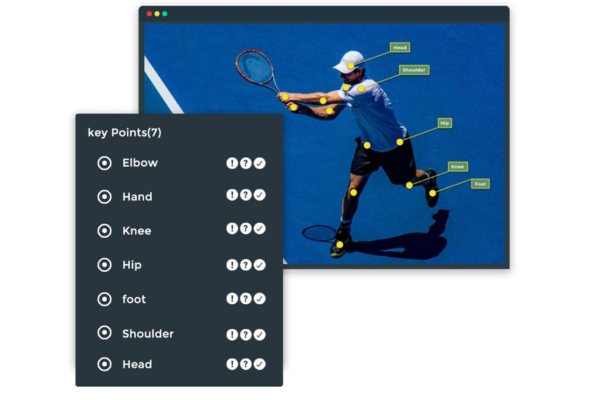In the rapidly evolving world of artificial intelligence (AI) and machine learning (ML), key points annotation emerges as a critical technique for training computer vision models. This specialized form of data labeling is instrumental in teaching AI systems how to accurately recognize, understand, and interact with visual data. By focusing on the nuances of key points annotation, we can unlock new potentials in various AI-driven applications, from facial recognition to motion tracking.
What is Key Points Annotation?

Key points annotation involves marking specific points of interest on an image or video frame to identify distinctive features or parts of an object. Each annotated point is typically represented by a dot or a marker, which can be connected by lines or shapes to outline structures or patterns. This method provides detailed information about the shape, position, and orientation of objects within the visual data, making it invaluable for tasks requiring a high level of precision.
Applications of Key Points Annotation
The versatility of key points annotation makes it applicable in a wide array of fields and technologies. Here are some of the areas where it plays a pivotal role:
Facial Recognition and Analysis: In facial recognition systems, key points annotation is used to mark facial landmarks such as the corners of the eyes, nose, mouth, and jawline. This helps in understanding facial expressions, tracking facial movements, and improving biometric identification techniques.

Pose Estimation: For tracking human body movements, key points annotation identifies joints and parts of the body. It’s crucial for applications in sports analytics, physical therapy, and animation, where understanding the precise orientation and movement of the human body is necessary.

Object Detection and Recognition: Beyond humans, key points annotation is used to detect and recognize objects by identifying specific parts or features. This can be applied in autonomous vehicles for detecting traffic signs, in retail for identifying products, and in robotics for object manipulation.

Augmented Reality (AR) and Virtual Reality (VR): By annotating key points on objects or environments, AR and VR applications can more accurately overlay digital information on the real world, enhancing user experiences in gaming, education, and navigation.

The Importance of Key Points Annotation

Key points annotation is more than just marking images or videos; it’s about adding a layer of understanding that allows AI models to perceive depth, dimension, and dynamics. This enriched data is crucial for developing algorithms capable of sophisticated visual comprehension, from recognizing human emotions to accurately simulating virtual environments.
Best Practices for Key Points Annotation
For effective key points annotation, it’s essential to follow best practices:
Precision and Consistency: Ensure that the annotated points are placed accurately and consistently across images. This reduces ambiguity and improves the model’s learning efficiency.
Comprehensive Coverage: Annotate a diverse set of images or frames to cover various scenarios, angles, and lighting conditions. This enhances the model’s ability to generalize from the training data.
Use of Advanced Tools: Leverage advanced annotation tools that offer precision, flexibility, and efficiency. Many platforms provide features like zoom for fine detail, template overlays for consistency, and AI-assisted suggestions for speed.
Conclusion
Key points annotation is a cornerstone technique in developing sophisticated computer vision models. By providing detailed and precise data, it enables AI systems to understand and interpret the visual world with remarkable accuracy. Whether it’s enhancing security through facial recognition, creating immersive AR/VR experiences, or advancing robotics, key points annotation is at the heart of innovation, driving the future of technology forward. As we continue to explore and expand its applications, the possibilities are boundless, promising a future where AI seamlessly integrates with the nuances of the physical world.
-
Soumen Dashttps://intelgic.com/insights/author/admin/
-
Soumen Dashttps://intelgic.com/insights/author/admin/
-
Soumen Dashttps://intelgic.com/insights/author/admin/
-
Soumen Dashttps://intelgic.com/insights/author/admin/


